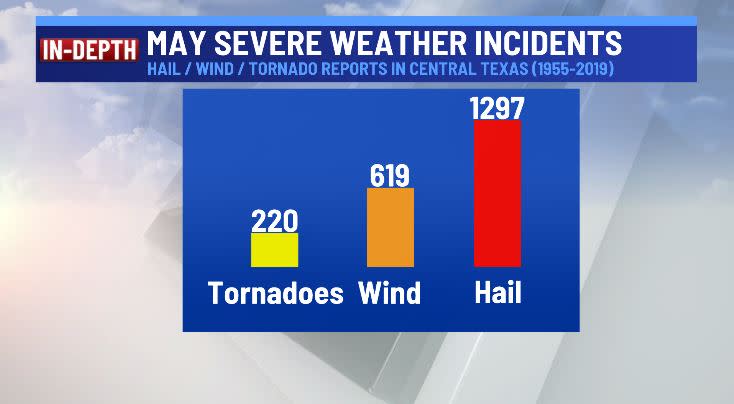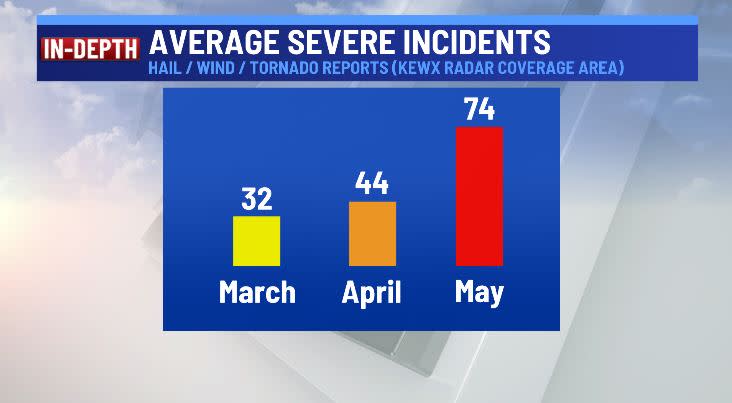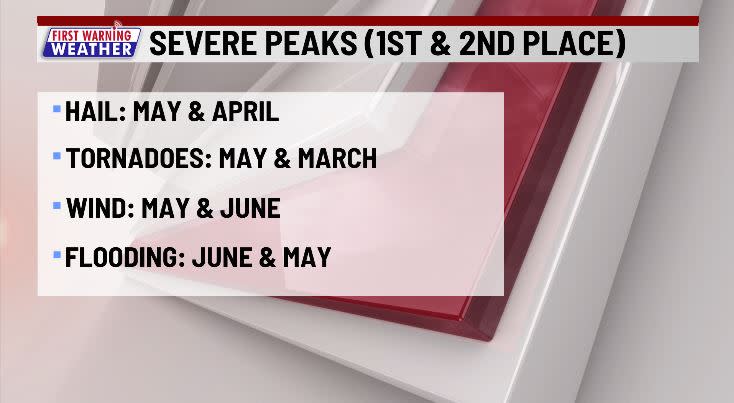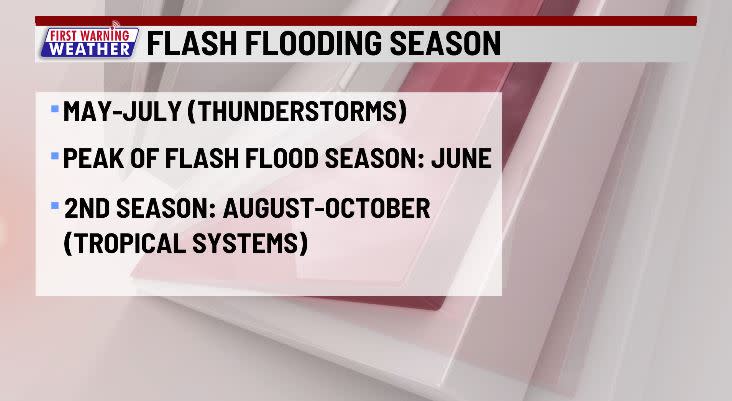Peak severe weather season is almost here in Central Texas

AUSTIN (KXAN) — Last week had our first outbreak of more widespread severe weather here in Central Texas for 2024. The typical peak of severe weather season arrives in just over two weeks as we head into the month of May.
May severe weather
May is a lot of things: Typically our most active month for severe weather, one of our most active months for flash flooding and usually our wettest month of the year.
The risk for almost all modes of severe weather peaks for us in May, but by far the most frequently occurring is hail.
In Central Texas, from 1955-2019, the National Weather Service’s Austin/San Antonio office logged 1297 hail reports in May, as well as 619 for wind and 219 for tornadoes.

The average number of severe weather incidents (in the KEWX radar coverage area) in May in Central Texas, is greater than than March and April combined.

We can dig even deeper into the data, because over the course of decades of information, we can see that the risk for hail, wind and tornadoes peaks slightly differently in May.
Hail peaks in early May. Tornado risk peaks in mid-May. Wind damage risk peaks in late May into early June.
May is the peak month for each tornadoes, hail and wind events here in Central Texas, but the second busiest month for each of these modes is different. The second most active month for hail is April, but March is our second most active month for tornadoes and June is our second most active month for thunderstorm wind damage.

Flash flooding has a later season, similar to thunderstorm wind damage.
Flash flooding
Newly reviewed data suggests that June, not May, is our peak month for flash flooding. According to National Weather Service Austin/San Antonio office, we’ve had 506 flash flooding reports from 1955-2019 in June, compared to 498 in May.
Storms typically move more slowly as we head into the summer months, promoting storms sitting or training over the same areas with excessive downpours.
Flash flooding season runs from May-July with a secondary season in August-October thanks to tropical activity.

Just like severe weather, flash flooding CAN and DOES happen at any time of year.
Severe weather random facts
Decades of data suggests that, on average, May 10 is our most active day for severe weather out of any other day of the year. The most active time for severe weather is 6-7 p.m.
The risk for flash flooding doubles from April to May. May also has, on average, more than twice as many tornadoes as any other month of the year.
Have a plan
Severe weather and flash flooding can happen during the day or at night. Have a plan with your family to stay informed and weather aware. Have multiple sources of weather information and make sure that some of them will wake you up should urgent severe weather happen while you’re asleep.
Stay with the First Warning Weather Team as we take you into the peak of severe weather season and whatever may happen.
For the latest news, weather, sports, and streaming video, head to KXAN Austin.

